Rob Bignell's Blog, page 355
October 25, 2013
Increase website visits with strategic SEO
Search Engine Optimization is another way to improve your page rank. As search engine robots and crawlers check over your website, they seek key words so that someone using a search engine gets sites that best match their needs. Simply incorporating certain keywords into your website text will improve the chances of someone finding your site when they search for those words.
Optimization is another way to improve your page rank. As search engine robots and crawlers check over your website, they seek key words so that someone using a search engine gets sites that best match their needs. Simply incorporating certain keywords into your website text will improve the chances of someone finding your site when they search for those words.
Sometimes, though, you can’t fit those words into the text – for example, my Hikes with Tykes: A Practical Guide to Day Hiking with Kids book would appeal to parents, fathers, mothers, grandparents, grandfathers, grandmothers, Boy Scout leaders, Girl Scout leaders, and teachers. Getting “parents” and “grandparents” into text on my website was easy enough, but the other words felt forced. To get around that, we can use meta tags.
Meta tags are coding you insert into your website to let search engine robots and crawlers identify these words as relevant. When someone types “Boy Scout Leader” into their search engine, my website might pop up, whereas before it stood no chance at all of doing so.
There are two types of meta tags that are important to your website. One is the “description,” which is a 150-200 character sentence telling what your website is all about. The other is the “keyword” in which you list words that don’t necessarily appear on your site; since someone typing them into a search engine likely would find your site useful, it will now pop up for them.
To add meta tags to your website, you’ll need to access the screen in which your website appears as html text (this is all of the coding used to build your website). You can find this on the website host pages where you built your site. Look for in the html code (it should be near the top). After it, copy and paste the following two meta tags:
Next, write in the quotations marks following “content=” your website description in the first meta tag and the keywords in the second one. Keywords must be separated by a comma (as shown in the meta tag above).
Be sure to save this change. Within a month or two, you should begin seeing results as search engine robots and crawlers identify them.
Need an editor? Having your book, business document or academic paper proofread or edited before submitting it can prove invaluable. In an economic climate where you face heavy competition, your writing needs a second eye to give you the edge. I can provide that second eye.
Related articles
 How to find a literary agent for your book
How to find a literary agent for your book How to find lit agents, publishers for your writing
How to find lit agents, publishers for your writing Add contact page to your book's website
Add contact page to your book's website
October 24, 2013
How to determine your book’s margins
Once you 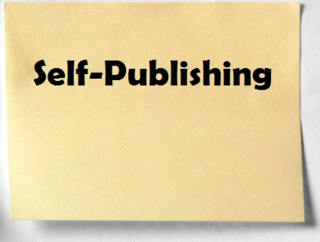 decide the size of your book (or the trim size), the next step in self-publishing is to set your margins. This is the white frame that runs between the page’s text and the page’s edge.
decide the size of your book (or the trim size), the next step in self-publishing is to set your margins. This is the white frame that runs between the page’s text and the page’s edge.
To ensure that the words aren’t too close to the page edge where they could be cut off when the printer trims the paper, you want to ensue there’s enough white space. At the same time, the greater the white space, the more paper you’ll need for the book, potentially raising the printing cost.
Margins are measured in inches by their distance from the text to the page edge. Imagine a line running across the very top of your text. Place the edge of your ruler there then measure to the page edge, and you have your margin size.
Determining margins for your book first requires that you know your book’s trim size. Generally, for any book whose trim size is 6”x9” or smaller, use half-inch margins on all sides of the book except for the one nearest the binding. This is called the inside margin and needs to be slightly larger, usually three-quarters of an inch.
You want to have a larger inside margin because books curl near the spine. This means less light gets there, making words on that side of the page more difficult to read. A wider inside margin eliminates this issue.
Not all printers and book designers will agree with these simple rules. For example, mainstream publishing houses typically print books with top margins that are narrower than then the bottom margins. They also typically include a running footer, such as a page number, in the bottom margin. Many who self-publish, especially those formatting their books in Microsoft Word documents, place the page number in the top margin because doing so requires less fussing around. You’ll have decide which approach to take, but know that in self-publishing equal top and bottom margins are quite common.
Sometimes the “rules” for margins have little to do with the page edge. “The Chicago Manual of Style,” for example, recommends printing 65 to 70 characters (including spaces) on each line. This can be set if formatting Microsoft Word.
Some related terms you might run into when self-publishing include:
g Alignment – Text can be centered or the margins on the page’s right side can be left ragged or so that the last letter of every line stops at the same spot (except at a paragraph’s end). The option you choose is the text’s alignment. If using Microsoft Word, opt for the “Justify” alignment, which is how this book’s right margin is printed (all letters end at a standard straight line).
g Justification – This either can refer to the alignment selected or to where your lines end at the bottom of the page. Regarding the latter, presuming the text fills the entire page, you want the last line of every page to end at exactly where the bottom margin begins. You wouldn’t want the text to end a half-inch from the page’s edge on an even-numbered page but then 4/7 of an inch from the page’s edge on the facing odd-numbered page, as this would look amateurish.
g Gutters – In larger books, you might split the text into two or even three columns. The white space between these columns is the gutter. Usually, the gutter is no more than 1/4 inch wide. When dividing books into columns, make sure each column is the same width. Also, if you have three columns that seem awfully thin, it’s always better to opt for two wide columns.
Need an editor? Having your book, business document or academic paper proofread or edited before submitting it can prove invaluable. In an economic climate where you face heavy competition, your writing needs a second eye to give you the edge. I can provide that second eye.
Related articles
 What needs to go on your book's title pages
What needs to go on your book's title pages Formatting main text for your book
Formatting main text for your book Forewords, prefaces and introductions
Forewords, prefaces and introductions
October 23, 2013
Getting concrete with literally vs. figuratively
Ever get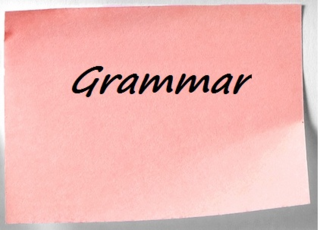 a feeling when hearing these two words that you don’t quite know what one means?
a feeling when hearing these two words that you don’t quite know what one means?
“Literal” means you’re saying exactly what happened. “Figurative” means you’re speaking metaphorically.
So, during a headache, one’s head “figuratively explodes” not “literally explodes.”
Need an editor? Having your book, business document or academic paper proofread or edited before submitting it can prove invaluable. In an economic climate where you face heavy competition, your writing needs a second eye to give you the edge. I can provide that second eye.
Related articles
 Cracking a bad habit: cement vs. concrete
Cracking a bad habit: cement vs. concrete Two l's or not two l's: Canceled vs. cancelled
Two l's or not two l's: Canceled vs. cancelled Tighten writing by cutting begin fallacy
Tighten writing by cutting begin fallacy Use fragments for rhetorical effect
Use fragments for rhetorical effect
October 22, 2013
Avoid using weak pushbutton words in story
Sometimes rather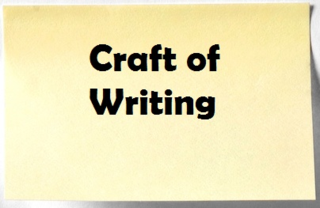 that finding a truly evocative term, writers get lazy and use pushbutton words. Pushbutton words attempt to evoke an emotional response from readers without appealing to their critical faculties or intellect. American writer Lewis Shiner coined the term.
that finding a truly evocative term, writers get lazy and use pushbutton words. Pushbutton words attempt to evoke an emotional response from readers without appealing to their critical faculties or intellect. American writer Lewis Shiner coined the term.
Examples of pushbutton words include: dreams, poet, song and tears in sentences like these:
He wondered if his dreams would ever come true.
Her heart sang like a poet’s.
He could not shake the image of her smile, which remained in his head like a pretty song.
Tears welled in her eyes.
Each of these words is intended to evoke an emotional response (dreams=hope, poet’s=love, song=beauty, tears=sadness), as if the writer says, “I want readers to feel sadness, so I will push the button marked ‘tears’ and that’s what they’ll feel." Because writers overuse these words, however, the stimuli doesn’t work so well; there is a bad connection between the button and the reader’s response.
If using a pushbutton word in your writing, delete the sentence and start over. Seek another way to be evocative.
Need an editor? Having your book, business document or academic paper proofread or edited before submitting it can prove invaluable. In an economic climate where you face heavy competition, your writing needs a second eye to give you the edge. I can provide that second eye.
Related articles
 Tighten writing by cutting begin fallacy
Tighten writing by cutting begin fallacy Mastering the fine art of dialogue punctuation
Mastering the fine art of dialogue punctuation How to finally finish your languishing novel
How to finally finish your languishing novel Improve your writing by dumping fuzzy words
Improve your writing by dumping fuzzy words
October 21, 2013
Types of academic papers you could write
Once you’ve 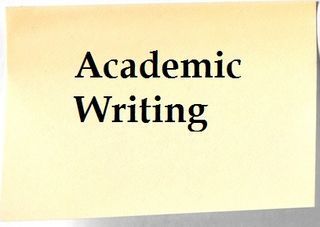 received your writing assignment, you’ll need to determine what kind of paper you’re expected to write. Knowing this information will shape how you conduct your research and ultimately how you structure your paper. Not knowing this information will cost you time as you do unnecessary work or could lead you to writing a paper that doesn’t meet your instructor’s expectations, meaning a low grade.
received your writing assignment, you’ll need to determine what kind of paper you’re expected to write. Knowing this information will shape how you conduct your research and ultimately how you structure your paper. Not knowing this information will cost you time as you do unnecessary work or could lead you to writing a paper that doesn’t meet your instructor’s expectations, meaning a low grade.
Broadly speaking, there are three types of papers you could write:
n Report – In this type of paper, you describe what you learned from your readings and research. This is what was taught in elementary school: for example, the teacher might say “Write a report about cardinals” and you would read encyclopedias and some entries in scattered books about birds then collate all of that data into something sensible, making you a mini-expert on the songbird.
n Position – This perhaps is the most common type of paper for high school students and undergraduates to write: They take a position and support it with evidence. For example, they might take the position that the death penalty should be abolished and then offer three supporting points as to why it should be: it is an inhumane and barbaric form of punishment, it is an irreversible sentence that could be carried out against an innocent person, and it doesn’t deter the crime it punishes.
n Analysis – The more advanced the class, the greater the chance that students will be asked to analyze an issue. In a sense, the analysis paper begins as little more than a report, but at its end offers conclusions about this data. For example, an analysis paper might examine both sides of the gun control issue and present the data used to support those viewpoints. The challenge is to draw some conclusion about that data and hence the validity of those arguments. In that sense, an analysis often ends acting like a position paper.
Each of these types of papers can be written using a variety of structures (we’ll examine those in a future entry).
Knowing what the instructor expects will guide your research in the days ahead. If writing the position paper about the death penalty, you may not need to spend a lot of time researching the arguments for capital punishment but instead to go very in depth finding evidence and explaining the reasoning that supports your position. If you wrote an analysis paper about the same topic, you’d have to spend as much time researching one side of the argument as the other.
Need an editor? Having your book, business document or academic paper proofread or edited before submitting it can prove invaluable. In an economic climate where you face heavy competition, your writing needs a second eye to give you the edge. I can provide that second eye.
Related articles
 Understand instructions before writing paper
Understand instructions before writing paper What is a writer's 'natural' temperament?
What is a writer's 'natural' temperament? Improve your writing by dumping fuzzy words
Improve your writing by dumping fuzzy words Editor guest blogger at Eat, Sleep, Write
Editor guest blogger at Eat, Sleep, Write Smiling Tree Writing interviews IRES editor
Smiling Tree Writing interviews IRES editor
Center on internal flaw for compelling story
To make a 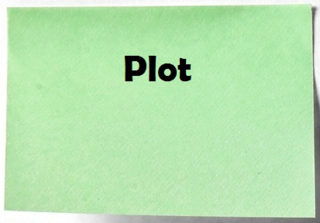 story more compelling, consider structuring it around an internal flaw in the main character. An internal flaw is some personal trait that makes a character less than perfect – perhaps being quick to anger, possibly suffering from jealousy or envy, maybe believing his outlook on the world is the only correct one. As none of us are perfect, an internal flaw makes a character who may otherwise be quite heroic appear more realistic to readers.
story more compelling, consider structuring it around an internal flaw in the main character. An internal flaw is some personal trait that makes a character less than perfect – perhaps being quick to anger, possibly suffering from jealousy or envy, maybe believing his outlook on the world is the only correct one. As none of us are perfect, an internal flaw makes a character who may otherwise be quite heroic appear more realistic to readers.
In a story, this internal flaw can be put to good effect, Begin with a central problem that sets the story into motion and that only the main character can resolve – except to actually reduce this central problem, the main character must overcome his inner flaw. The story’s plot then centers on the main character dealing with his internal flaw as he fails to adequately address the story’s central problem.
For example, if the central problem in a science fiction story is that an old, virtually invincible war machine has come “back to life” and is preying upon innocent starships and planetary colonies, the only solution may be to enlist the only living designer of the berserker to determine its weakness and stop it. This story can become much more compelling, however, if the only living designer is a hermit and believes his old age and frailty prevents him from being useful or capable anymore. His internal flaw – a lack of confidence and faith in himself – now must be overcome if civilization is to survive.
The central problems gives our main character adequate motivation to address his internal flaw but he does not have the emotional tools to overcome it. The story then may show how his failure to address his internal flaw means he can’t defeat the machine. It may show how when he slightly but inadequately addresses his internal flaw he fails to stop the berserker and takes this as a sign that he is right about his uselessness. The story may show that when he more adequately addresses his internal flaw he almost succeeds in resolving the central problem. The story ultimately, in its climax, must show him making the sacrifice of giving up this sense of uselessness that he’s become “comfortable” with in order for him to actually succeed in stopping the machine.
What makes this story so compelling is that it’s character-based. It shows the character growing. Many readers will be able to identify with and root for this hero. The berserker scenes become the special effects that helps draw readers into the story and that prevents the story from becoming pure navel gazing.
Need an editor? Having your book, business document or academic paper proofread or edited before submitting it can prove invaluable. In an economic climate where you face heavy competition, your writing needs a second eye to give you the edge. I can provide that second eye.
Related articles
 Basic guidelines for your story's rising action
Basic guidelines for your story's rising action Your main character must fail
Your main character must fail Add ticking clock to create sense of urgency
Add ticking clock to create sense of urgency Descend the mountain with falling action
Descend the mountain with falling action Make final words of your story count
Make final words of your story count
October 20, 2013
What is a writer’s ‘natural’ temperament?
An image  of a novelist as a melancholy, moody artists who dons black as penning books during fits of insomnia or alcoholic inspiration pervades much of our society’s view of writers. No doubt some writers are like this, and the fact that some of the most famous were – the existentialists and the beat writers typically wore black while Hemingway drank continuously – has no doubt contributed to the stereotype that writers are restless and unhappy.
of a novelist as a melancholy, moody artists who dons black as penning books during fits of insomnia or alcoholic inspiration pervades much of our society’s view of writers. No doubt some writers are like this, and the fact that some of the most famous were – the existentialists and the beat writers typically wore black while Hemingway drank continuously – has no doubt contributed to the stereotype that writers are restless and unhappy.
Unfortunately, this also has led many budding novelists to believe that they can’t be successful unless in a state of “discontent.”
If there is a connection at all between temperament and writing "success," it probably is related to the genre one is working in. How does being discontented make one a great mystery writer, after all? That temperament probably does lend itself to writing the more literary works and the more philosophical of the science fiction works, though.
If there is an overarching temperament that is important to all fiction writers, curiosity about life and others arguably is paramount. Should that curiosity lead to discontent and anxiousness, then the author can write the kind of stuff of that discontented writers like to read. Hopefully that curiosity instead leads to a sense of self-improvement and love of craft so that one can master – or even influence – the genre that you write in.
Need an editor? Having your book, business document or academic paper proofread or edited before submitting it can prove invaluable. In an economic climate where you face heavy competition, your writing needs a second eye to give you the edge. I can provide that second eye.
Related articles
 Write a great narrative hook for your story
Write a great narrative hook for your story Flat line those errors on indices vs. indexes
Flat line those errors on indices vs. indexes Improve your writing by dumping fuzzy words
Improve your writing by dumping fuzzy words Follow Heinlein's Rules to land big book deal
Follow Heinlein's Rules to land big book deal Writers can blog about variety of topics
Writers can blog about variety of topics
October 19, 2013
Understand instructions before writing paper
Before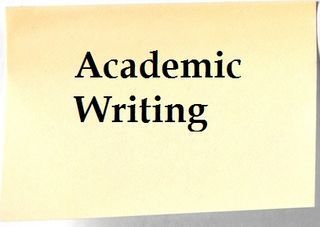 you even begin writing your paper, you need to fully understand what the instructor expects. Knowing that will help you focus your thoughts about what you’ll write and will prevent you from later having to rewrite when the instructor reviews your paper before you turn it in.
you even begin writing your paper, you need to fully understand what the instructor expects. Knowing that will help you focus your thoughts about what you’ll write and will prevent you from later having to rewrite when the instructor reviews your paper before you turn it in.
Hopefully, the instructor has given more than verbal instructions about what to write. If that’s all he does, though, make sure you take notes. If the assignment is unclear, ask the instructor to clarify. Even if the instructions are given in written form on a marker board, in a syllabus, or via email, always ask for clarification if some element is unclear.
From the instructions, you should be able to answer the following questions:
n What is the paper’s topic or thrust? You need to know the scope of what you can write about. This will help you determine what you should research and your thesis (or the main point of your paper).
n What is the paper’s length? You don’t want to write too little or too much. Usually the paper’s maximum length is given by page or word count.
n When is the paper due? Knowing the deadline will help you set up a timetable for completing the paper. The instructions also may include some pre-deadline dates, such as when you must meet the instructor for a conference to discuss the paper.
n What kind of paper do you have to write? Not every paper is a straight report in which you describe what you learned from your readings and research. In some papers, you must take a position and support it with evidence; in others, you might analyze an issue.
Also, watch in the instructions for any information about:
n How should the paper be structured? All papers follow a basic structure of introduction, supporting points, and conclusion. There are many ways, however, to organize that middle section of supporting points, which is the meat of your paper. Your instructor may have a preference for how you organize that section, such as three supporting points or using comparison and contrast.
n What style should you write the paper in? You’ll likely need footnotes and a bibliography for your paper, especially as you advance in your coursework. Knowing if the instructor wants you to use APA, the Chicago Manual of Style, or another format is key as this determines how your footnoting, bibliography and more will be done.
n What sources can I use? Your instructor may limit from where you can gather information to quote or reference in the paper (usually encyclopedias are a no-no). He also may require that you use specific sources, such as books read for class or experiences that you had while working on a class project.
There are many other instructions or bits of information that might be given (such as how many points or percent of your grade the paper is worth), all based on the paper you’ve been asked to write and the course you’re taking. It may seem like extra work to read or ask about all of these instructions, but fully understanding them will make planning and writing your paper considerably easier and in the long run save you far more time.
Need an editor? Having your book, business document or academic paper proofread or edited before submitting it can prove invaluable. In an economic climate where you face heavy competition, your writing needs a second eye to give you the edge. I can provide that second eye.
Related articles
 Writing your nonfiction book's bibliography
Writing your nonfiction book's bibliography Improve your writing by dumping fuzzy words
Improve your writing by dumping fuzzy words Editor guest blogger at Eat, Sleep, Write
Editor guest blogger at Eat, Sleep, Write
Why you can’t get your outline into words
Sometimes despite penning an outline, the writer can't seem to organize those points into complete sentences and turn it into a draft of a story.
penning an outline, the writer can't seem to organize those points into complete sentences and turn it into a draft of a story.
Is this writer’s block? Probably not. After all, constructing an outline shows that the writer’s creative energy is high.
The problem likely rests with the depth of the outline itself. Take a look at the outline and ask:
g Is the action beat-by-beat? In the extreme, an outline is detailed enough that a writer can literally turn each beat into a complete sentence or two. Anything sketchier than that suggests the author hasn’t thought enough about the plotting, even if they haven’t written it on paper and are merely relying on the outline to jog their memory.
g Are the major characters developed? An outline should give the main character’s motivations and reasons for resolving an issue. Conflicts between characters and the reasons for them should be listed and explored. A story revolves around the characters, so ensuring this is in the outline is vital.
g Does too much offstage action appear in the outline? Rather than focus on the story, sometimes writers create outlines that instead provide lots of exposition and background information. While that is important for an author to know, it doesn't translate well into an actual story.
If the outline does contain beat-by-beat action, developed characters, and plenty of onstage action, then perhaps the problem is the story itself. What was brainstormed for the outline simply may not be the story the writer wants to tell. In such cases, always feel free to deviate from the outline. After all, the outline is just a map, and there are many routes for reaching the story’s end.
Some writers fret over the imperfection of their first draft as they convert an outline into complete sentences. If so, let go! Don't worry about the first draft being just right. Let it be full of incomplete sentences and typos. That's why it's a first rather than a final draft – because it needs to be revised.
Finally, an outline simply isn’t for every writer. Many prefer to free write as they find an outline restrictive and believe it hampers their creative process. If you’re having trouble converting an outline to a first draft, you may be one of those writers. In that case, set the outline aside and just try writing. You might be surprised by the results!
Need an editor? Having your book, business document or academic paper proofread or edited before submitting it can prove invaluable. In an economic climate where you face heavy competition, your writing needs a second eye to give you the edge. I can provide that second eye.
Related articles
 Outline your scene when stuck on what to write
Outline your scene when stuck on what to write Improve your writing by dumping fuzzy words
Improve your writing by dumping fuzzy words Mastering the fine art of dialogue punctuation
Mastering the fine art of dialogue punctuation
October 18, 2013
Editor guest blogger at Eat, Sleep, Write
I’m the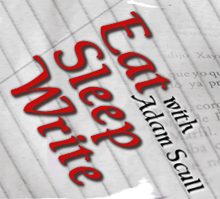 guest blogger at Eat Sleep Write this week. My article
guest blogger at Eat Sleep Write this week. My article
Need an editor? Having your book, business document or academic paper proofread or edited before submitting it can prove invaluable. In an economic climate where you face heavy competition, your writing needs a second eye to give you the edge. I can provide that second eye.



